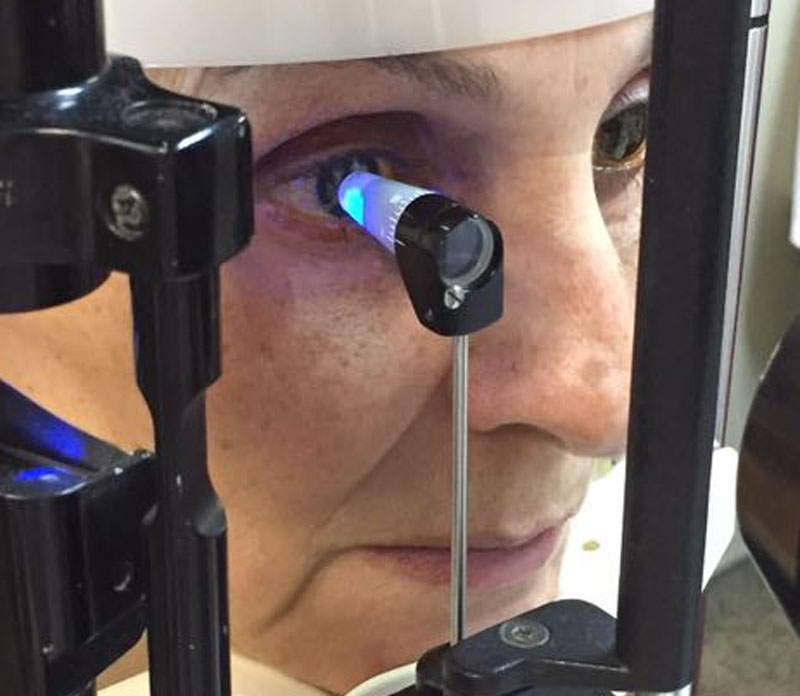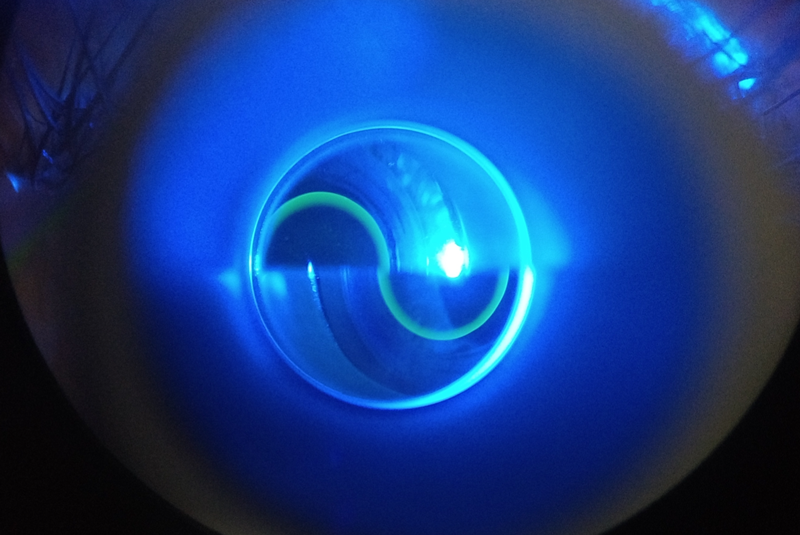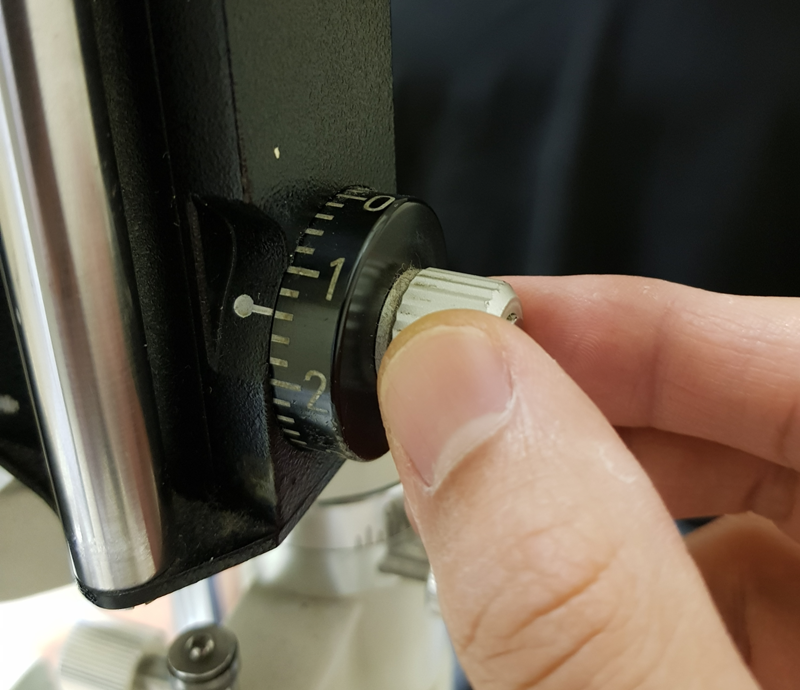A tonometer is an instrument that measures the IOP. This can be done by a contact or non-contact method. The contact method most commonly used is known as Goldmann applanation tonometry, which is the reference standard method to measure IOP. Other machines that may be used for recording IOP include: pneumotonometer, Tonopen, Rebound Tonometer, Perkin’s Tonometer and Schiotz Tonometer.
- Your doctor will put a drop in your eyes to anaesthetize the cornea so that you do not feel any discomfort during the procedure. A fluorescent dye will also be instilled in your eye.
- You will be asked to place your chin and forehead at the slit lamp for IOP measurement.
- The tonometer blue tip will be moved forward till it gently touches the cornea and the lever is adjusted to gauge the eye pressure.
This is a painless procedure, and you can help your doctor obtain a more precise measurement by maintaining your forehead and chin stable at the slit-lamp, eyes wide open, try not to blink, and keep looking straight ahead.
This is usually performed on every consultation, and may also be performed multiple times in a single day, as IOP is a quite dynamic parameter, and do vary during different hours of the day, and along different days.



